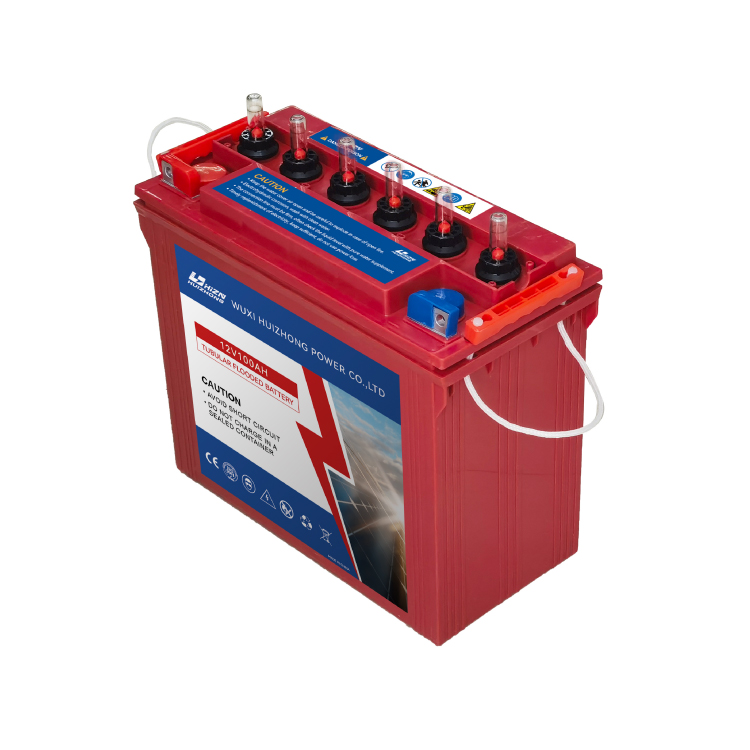An OPzS (OpzS = Ortsfeste Panzerplattenzellen, which translates to “stationary tubular plate cells”) battery is a type of flooded lead-acid battery known for its long life and deep discharge capabilities.
- Positive Plates: These plates are tubular in design, filled with lead dioxide (PbO2). The tubular design provides a large surface area, enhancing the battery’s performance and durability.
- Negative Plates: These plates are flat and made from spongy lead. The design and material optimize the electrochemical reactions within the battery.
- Separators: These are placed between the positive and negative plates to prevent short circuits while allowing ionic conductivity. They are usually made of microporous materials like PVC or synthetic materials.
- Electrolyte: The electrolyte is a mixture of sulfuric acid and water, which facilitates the chemical reactions necessary for the battery to store and release energy. In an OPzS battery, the electrolyte is in a liquid (flooded) form.
- Battery Container and Cover: The container and cover are typically made from robust, corrosion-resistant materials like acrylonitrile butadiene styrene (ABS) or polypropylene. They protect the internal components and provide structural integrity.
- Vent Caps: These allow the release of gases (like hydrogen and oxygen) produced during the charging process. Vent caps also provide access for checking and maintaining electrolyte levels.
- Active Material: This is the paste applied to the grids of both the positive and negative plates. In positive plates, it’s lead dioxide, while in negative plates, it’s spongy lead. The active material is crucial for the electrochemical reactions that store and release energy.
- Pole Bridges: These connect the cells in series within the battery, ensuring the appropriate voltage output. They are usually made of lead or lead alloys due to their conductivity and durability.
- Cell Connectors: These connect individual cells within a battery bank. They are designed to handle the current flow between cells and are made from materials with good electrical conductivity.
- Water Additions: Unlike VRLA batteries, OPzS batteries require periodic maintenance, including the addition of distilled water to maintain electrolyte levels.
These components work together to provide the OPzS battery with its high reliability, long cycle life, and ability to handle deep discharge cycles.


